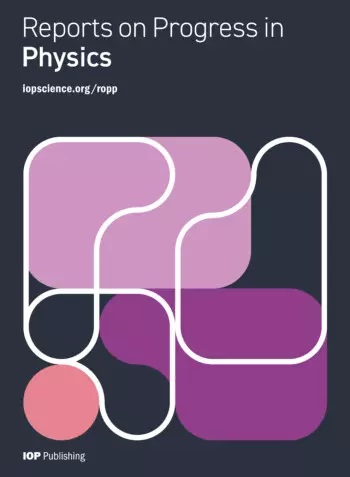Optical response of correlated electron systems
IF 19
1区 物理与天体物理
Q1 PHYSICS, MULTIDISCIPLINARY
引用次数: 63
Abstract
Recent progress in experimental techniques has made it possible to extract detailed information on dynamics of carriers in a correlated electron material from its optical conductivity, σ(Ω,T). This review consists of three parts, addressing the following three aspects of optical response: (1) the role of momentum relaxation; (2) Ω/T scaling of the optical conductivity of a Fermi-liquid metal, and (3) the optical conductivity of non-Fermi-liquid metals. In the first part (section ), we analyze the interplay between the contributions to the conductivity from normal and umklapp electron–electron scattering. As a concrete example, we consider a two-band metal and show that although its optical conductivity is finite it does not obey the Drude formula. In the second part (sections and ), we re-visit the Gurzhi formula for the optical scattering rate, 1/τ(Ω,T)∝Ω2+4π2T2, and show that a factor of 4π2 is the manifestation of the ‘first-Matsubara-frequency rule’ for boson response, which states that 1/τ(Ω,T) must vanish upon analytic continuation to the first boson Matsubara frequency. However, recent experiments show that the coefficient b in the Gurzhi-like form, 1/τ(Ω,T)∝Ω2+bπ2T2, differs significantly from b = 4 in most of the cases. We suggest that the deviations from Gurzhi scaling may be due to the presence of elastic but energy-dependent scattering, which decreases the value of b below 4, with b = 1 corresponding to purely elastic scattering. In the third part (section ), we consider the optical conductivity of metals near quantum phase transitions to nematic and spin-density-wave states. In the last case, we focus on ‘composite’ scattering processes, which give rise to a non-Fermi-liquid behavior of the optical conductivity at T = 0: σ′(Ω)∝Ω−1/3 at low frequencies and σ′(Ω)∝Ω−1 at higher frequencies. We also discuss Ω/T scaling of the conductivity and show that σ′(Ω,T) in the same model scales in a non-Fermi-liquid way, as T4/3Ω−5/3.相关电子系统的光学响应
实验技术的最新进展使得从相关电子材料的光学电导率σ(Ω,T)中提取载流子动力学的详细信息成为可能。本文分为三个部分,分别从以下三个方面论述了光响应:(1)动量弛豫的作用;(2)费米液态金属的光电导率Ω/T标度,(3)非费米液态金属的光电导率。在第一部分(章节)中,我们分析了普通和非克拉普电子-电子散射对电导率的贡献之间的相互作用。作为一个具体的例子,我们考虑了一个双波段金属,并表明,虽然它的光学导电性是有限的,但它不服从德鲁德公式。在第二部分(第2节)中,我们重新考察了光学散射率的Gurzhi公式,1/τ(Ω,T)∝Ω2+4π2T2,并证明了4π2因子是玻色子响应的“第一-松原频率规则”的表现,该规则表明1/τ(Ω,T)在解析延伸到第一玻色子松原频率时必须消失。然而,最近的实验表明,在大多数情况下,gurzhi类形式的系数b (1/τ(Ω,T)∝Ω2+bπ2T2)与b = 4有显著差异。我们认为偏离Gurzhi标度可能是由于弹性但能量依赖的散射的存在,它使b的值降低到4以下,b = 1对应于纯弹性散射。在第三部分(节)中,我们考虑了金属在量子相变到向列相和自旋密度波态附近的光学导电性。在最后一种情况下,我们关注“复合”散射过程,这导致T = 0时光学电导率的非费米-液体行为:低频σ ' (Ω)∝Ω−1/3,高频σ ' (Ω)∝Ω−1。我们还讨论了电导率的Ω/T标度,并表明σ ' (Ω,T)在同一模型中以非费米液体方式标度,如T4/3Ω−5/3。
本文章由计算机程序翻译,如有差异,请以英文原文为准。
求助全文
约1分钟内获得全文
求助全文
来源期刊

Reports on Progress in Physics
物理-物理:综合
CiteScore
31.90
自引率
0.00%
发文量
45
审稿时长
6-12 weeks
期刊介绍:
Reports on Progress in Physics is a highly selective journal with a mission to publish ground-breaking new research and authoritative invited reviews of the highest quality and significance across all areas of physics and related areas. Articles must be essential reading for specialists, and likely to be of broader multidisciplinary interest with the expectation for long-term scientific impact and influence on the current state and/or future direction of a field.
 求助内容:
求助内容: 应助结果提醒方式:
应助结果提醒方式:


